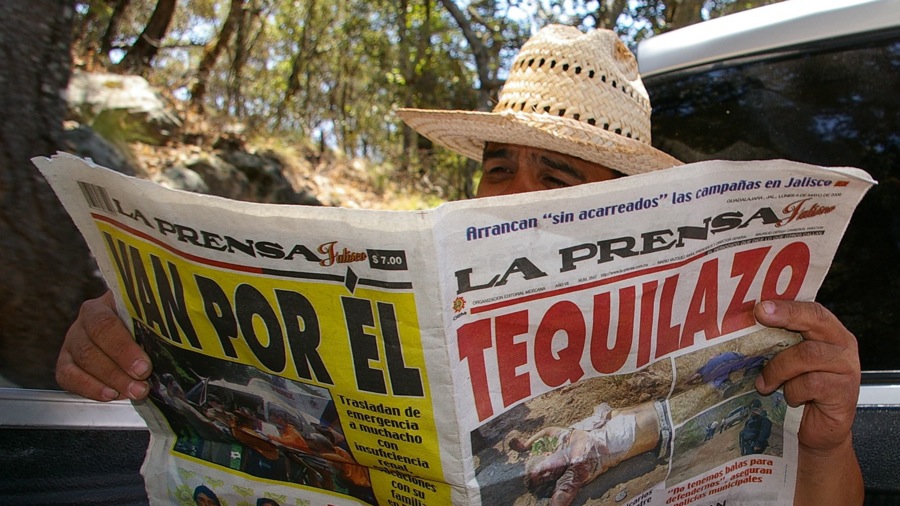Dispatches, Nicaragua, Photo Essays
Will Gold Make You Rich? Meet Nicaragua’s Güiriseros
March 24, 2010 By James Rodriguez
To begin viewing this photo essay as a slideshow, click the first image.
- Since 1880, güirisería, or artisanal mining, has been the main economic activity in the municipalities that make up the area known as the mining triangle in Nicaragua’s North Atlantic Autonomous Region (RAAN).
- Enormous extensions of tropical forests cover most of the RAAN in northeastern Nicaragua.
- Population density hovers around 17 residents per square kilmoeter in a region historically characterized by scarce human presence.
- A gold rush unleashed the colonization of the RAAN in 1880, giving birth to the three municipalities of the mining triangle:
- Siuna, Rosita and Bonanza.
- Industrial mining has come and gone, but generations of güiriseros have extracted gold in this region for 130 years.
- Artisanal gold extraction begins with the gathering of auriferous mineral from abandoned mines, external outcrop or river sediments–either manually or with explosives.
- The material collected, called broza, contains particles of gold.
- Broza can be sold to a mining company or processed by the miner in an artisan workshop called a rastra.
- In the first treatment, the miner grinds the broza with mallets…
- …and separates the particles that do not contain gold.
- A rastra always has a mill–either manually operated or motorized–to grind the broza.
- Automobile engines are commonly used in the rastras to propel the mills.
- Most motorized mills spin large rocks…
- …that grind the broza as they rotate.
- A group of güiriseros in Siuna helps propel a mill…
- …motorized by a car.
- After grinding, the broza is cleaned.
- Miners use mercury to extract the gold from the sand that remains.
- The mercury binds to the gold particles, creating an amalgam.
- The amalgam is poured into a handkerchief…
- …and thoroughly rinsed…
- …giving way to an amalgam pearl.
- Mercury’s numerous negative effects on humans include disruption of the nervous system, brain damage, DNA and chromosomal damage, allergic reactions, skin rashes, fatigue, headaches, sperm damage, birth defects and miscarriages.
- To separate mercury from gold, the amalgam pearl is heated. The process poses health risks to the miner and those nearby, who inhale the fumes.
- The heat evaporates the mercury, which sticks to leaves placed above the amalgam pearl.
- To save the mercury for reuse, the miners submerge the leaves in water, allowing the metal to separate.
- Afterward, a blow torch is applied to evaporate the last traces of mercury.
- A pellet of gold rewards the miner’s work.
- Traces of the mercury, however, seep into the air, water and soil, posing serious health hazards to the local population.
- It is customary for the rastra owner and the miner who brings the broza to share the profits on roughly equal terms.
- From 1909 to 1979, U.S. and Canadian companies established industrial mines in the three municipalities. The triumph of the Sandinista Revolution in 1979 and the declining price of gold prompted the companies to abandon their operations. This is a panoramic view of a mine once operated by the Rosario Mining Company in Rosita.
- The Sandinista government nationalized the abandoned industrial sites of the mining triangle in 1980. But low yields and conflict with the U.S.-backed Contras led to the closure of the mines. Exploration and exploitation licenses were privatized once more in 1994.
- Hemco Nicaragua, S.A., a Panamian company that operates as a subsidiary of the Canadian Calibre Mining Corporation, received a 50-year concession in 1994. Calibre currently holds 710 square kilometers reaching throughout the RAAN’s three municipalities.
- Large-scale mining promised to bring work, development and progress, but poverty, social conflict and environmental degregation remain the region’s reality. This image shows the tailings pond in Bonanza, where waste from the open-pit Hemco mine has accumulated over time.
- Besides the cyanide and heavy metals that typially accrue in this type of artificial waste pond, this particular one also contains dozens of barrels used to transport the cyanide needed to separate the gold from the rock.
- An earthquake measuring 4.3 on the Richter scale struck on Jan. 30, 2010, cracking part of the containment wall designed to keep toxic waste from flooding the town and contaminating a local river. The emergency prompted the resettling of 13 families.
- Mayor of Bonanza Alexander Alvarado said the lagoon posed a flooding threat to the population.
- Alvarado said the local river was being tested to see if it cyanide had spilled into it.
- In the town of Bonanza…
- …barrels of cyanide are used as public trash bins.
- In Siuna, the cyanide barrels-turned-trashcans are branded with the labels of the Mayors office, Hemco and Yamana.
- This family resourcefully, though dangerously, used barrels of lethal cyanide to build a fence around their home.
- The municipalities remain deficient in basic services, lacking potable water, electricity, sewage and schools.
- Though the mines generate for North American companies,
- the güiriseros remain impoverished.
- The price of gold has shot up from less than $300 per troy once in 2000,
- to more than $1,000 per troy once today, according to information from the Nicaraguan Chamber of Mining (CAMINIC), cited by Radio la Primerísima.
- Analysts expect the price to continue to climb.
- Will it make the güiriseros richer?
This photo essay is adapted from “Gold Fever: Artisanal and Industrial Mining Extraction in the Industrial Triangle,” which originally appeared on Feb. 28, 2010, at MiMundo.org. The images, by James Rodríguez, were produced with the support of Oxfam America.
Captions by Roque Planas.
About James Rodriguez
James is an independent photojournalist based in Guatemala who specializes in documenting that country's post-war social movement. Raised in Mexico City, James holds a B.A. in Cultural Geography from the University of California at Los Angeles. His work has appeared in numerous publications, including the Indypendent of New York and Yes! Magazine, and can be viewed at Mi Mundo.
























































1 Comment
[…] Check out James Rodríguez’s photo essay, detailing the process and health hazards of artisanal gold mining — Will gold make you rich? Meet Nicaragua’s güiriseros. […]
Comments are closed.